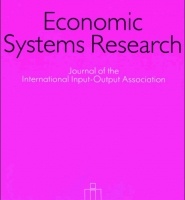
Explaining value chain differences in MRIO databases through structural path decomposition
Many multiregional input–output (MRIO) databases are used to calculate consumption-based accounts. Results feature in climate policy discussion on emissions reduction responsibilities; yet studies show that outcomes produced by each database differ. This paper compares the emissions associated with value chains from Eora, EXIOBASE, GTAP and WIOD. Structural path analysis identifies the largest paths in each database and the differences in common paths are calculated. For the top 100 value chain paths that contain the largest difference, structural path decomposition is used to identify the contribution each part of the value chain makes towards the difference. The results identify and quantify key flows that are the cause of difference in the databases. From these, we can conclude that key MRIO database construction decisions, such as using the residence or territorial principle for emissions allocation and whether energy spends are reallocated based on physical data, are the major causes of differences.
Read the paper here.